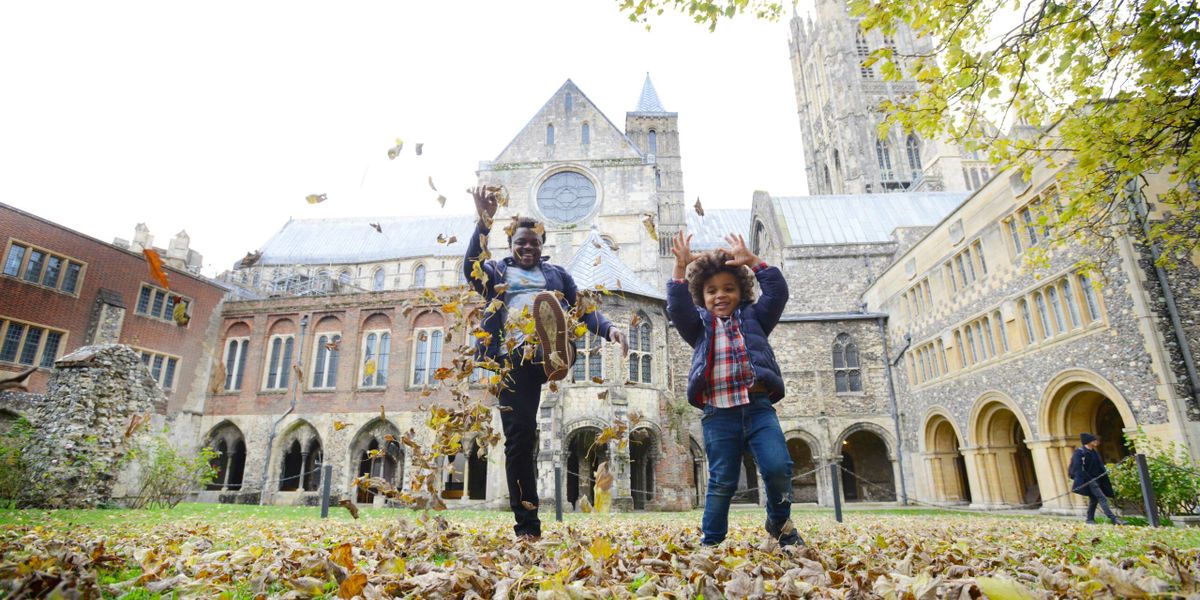106th Archbishop of Canterbury formally elected at centuries-old ceremony
On Tuesday, a centuries-old ceremony at Canterbury Cathedral formally elected the 106th Archbishop of Canterbury.
His Majesty The King had issued a licence, known as a Congé d'Elire, which allowed the College of Canons of Canterbury Cathedral to elect an Archbishop of the See of Canterbury.
The King had also recommended, by letters missive, that the Right Reverend and Right Honourable Dame Sarah Elisabeth Mullally be elected Archbishop of Canterbury.


The Dean of Canterbury, the Very Reverend David Monteith, had called the College of Canons to meet in the Cathedral’s medieval Chapter House on Tuesday 25 November to elect the new Archbishop.
The College of Canons is comprised of Dean David, the Cathedral’s Residentiary, Honorary and Provincial Canons, and the suffragan bishops and archdeacons of the Diocese of Canterbury. In attendance were several legal officers and invited observers. Bishop Sarah was not present on the day.
Following the election, the College of Canons issued a certificate – stamped with the Cathedral’s Seal – to His Majesty The King, recording the decision of the College. Public declarations are also displayed at the Cathedral, including in the ornately-carved Archbishop’s Cathedra Stall within the church. Letters Patent will now be issued in The King’s name, requiring arrangements to be made for the Election to be legally confirmed and bring the appointment into effect.
Following the election, Bishop Sarah will be known as the Archbishop of Canterbury-elect, although she will remain the Bishop of London until her Confirmation of Election at St Paul’s Cathedral in January 2026.
The election at Canterbury Cathedral must take place as part of the process by which a new Archbishop of Canterbury is confirmed, and is the result of the historic – and occasionally fraught – right of Canterbury Cathedral to elect the Archbishop.
In 1209, Canterbury’s monks came into conflict with King John when they exercised their authority to elect their own candidate as Archbishop rather than the one that the King wanted. When John tried to force his candidate upon the monks, they appealed to Rome - Pope Innocent III ultimately bypassed both candidates to appoint his own choice, the theologian Stephen Langton.
This was only a few decades after the monks of Canterbury had been in conflict with another monarch, John’s father King Henry II, after he had imposed his own choice of Archbishop on them – his Chancellor, Thomas Becket. Becket was initially seen as a figure of secular power - he was only ordained as a priest the day before he assumed the archbishopric – and the monks were deeply unhappy that their authority to choose their own candidate had been bypassed in favour of the King’s man.
In the Reformation, cathedrals finally had their right to elect bishops enshrined in a constitution - but only if the candidate was the monarch's nominee.


The election on Tuesday was followed by Choral Evensong in Canterbury Cathedral at 5.30pm. All were welcome to join Evensong as we prayed for Bishop Sarah Mullally’s ministry and service in the Diocese of Canterbury, Province of Canterbury, the Church of England and across the Anglican Communion.
- On 28th January 2026, there will be a Confirmation of Election at St Paul’s Cathedral in London, at which Bishop Sarah will legally become the Archbishop of Canterbury.
- On 25th March 2026 there will be an Installation (sometimes referred to as an ‘enthronement’) at Canterbury Cathedral, which denotes and marks the start of the new Archbishop of Canterbury’s ministry.

Stay in the loop
Sign up to our newsletter and stay up to date with all the latest events, news and offers
By adding my email I confirm my subscription to the newsletter and understand that the email address provided will be held by the Cathedral and the email service company (dotdigital) to use for distributing this newsletter only. For more information please see the Cathedral Privacy Notice.


